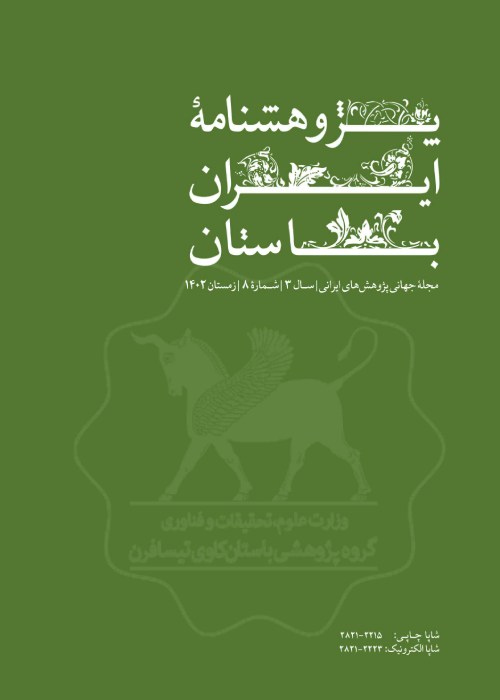Revision of the History of Smelting and Mining of Copper in the Center of the Iranian Plateau Based on the Evidence and Petrographic Tests of the Slag of Gazanak Zarandieh Tepe
Author(s):
Article Type:
Research/Original Article (دارای رتبه معتبر)
Abstract:
In a survey carried out in the Sadrabad area of Zarandieh in June 2020, in addition to the whole village of Sadrabad, its satellite areas were also examined and identified, which led to remarkable results in the archaeological studies of the Iranian plateau, which in addition to other archaeological survey, metal slags were also studied and analyzed there. Slag is the residue of minerals from the smelting, which occurs naturally as a molten silicate or as a mixture of several silicate minerals with compounds of oxides, sulfides, and metals. To detect metal minerals in slag, it is necessary to prepare a polished section from the samples in order to identify its type . The silicate minerals in the slag are studied with passing light using a thin section. Gazanak Zarandieh Tepe is located 85 km from Tehran and 75 km from Saveh in Sadrabad Vilage in Zarandieh city of Markazi province. The oldest settlement phase identified in this area is Neolithic (or Pre-pottery Neolithic) and the newest period identified is related to the Safavid era. In this survey, we obtained evidence of smelting and processing of copper, which included pure native copper and slag from smelting of this metal, which by integrating them for laboratory studies, especially the petrographic elemental analysis, which resulted in amazing results. The purpose of petrographic testing on study samples is to identify the components of the slag, the type of material extracted and, if possible, the host rock mineral. Since the study area lacks Chalcolithic age, and the abundance of plum ware, which appeared in the context of Cheshmeh Ali pottery and the transition period according to the speculation of the 2021 season, led us to the question that melting and extraction copper metal in the center of the Iranian plateau has an older history than the dates presented in this article.
Keywords:
Petrography , Slag , Gazanak , copper
Language:
English
Published:
Journal of Ancient Iranian Studies, Volume:2 Issue: 6, Summer 2023
Pages:
35 to 49
magiran.com/p2635699
دانلود و مطالعه متن این مقاله با یکی از روشهای زیر امکان پذیر است:
اشتراک شخصی
با عضویت و پرداخت آنلاین حق اشتراک یکساله به مبلغ 1,390,000ريال میتوانید 70 عنوان مطلب دانلود کنید!
اشتراک سازمانی
به کتابخانه دانشگاه یا محل کار خود پیشنهاد کنید تا اشتراک سازمانی این پایگاه را برای دسترسی نامحدود همه کاربران به متن مطالب تهیه نمایند!
توجه!
- حق عضویت دریافتی صرف حمایت از نشریات عضو و نگهداری، تکمیل و توسعه مگیران میشود.
- پرداخت حق اشتراک و دانلود مقالات اجازه بازنشر آن در سایر رسانههای چاپی و دیجیتال را به کاربر نمیدهد.
In order to view content subscription is required
Personal subscription
Subscribe magiran.com for 70 € euros via PayPal and download 70 articles during a year.
Organization subscription
Please contact us to subscribe your university or library for unlimited access!



